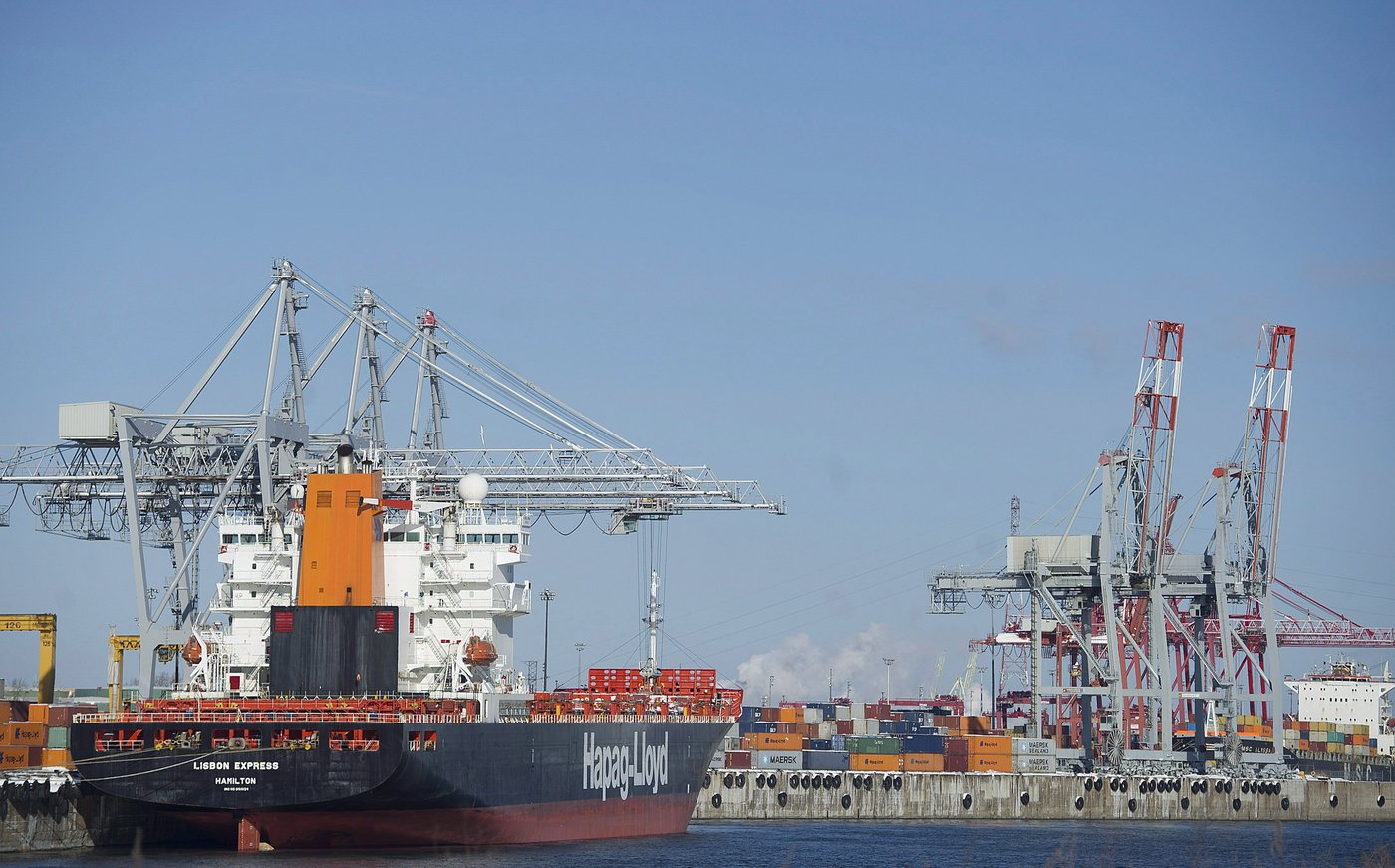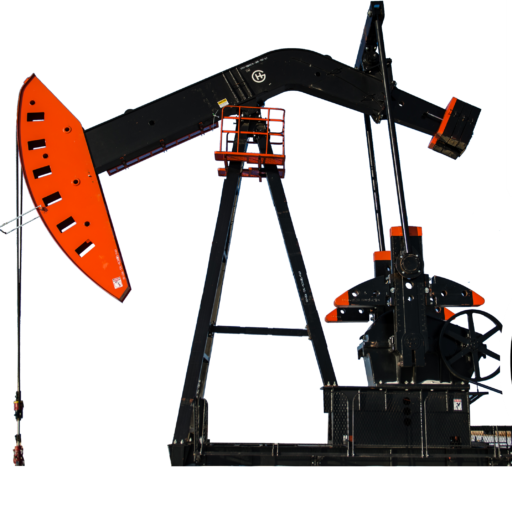
Container ships are shown in the Port of Montreal on January 4, 2016. Shippers who ply the St. Lawrence Seaway view critical minerals for electric vehicle batteries as key to their future — but it could be a while before the floodgates open on Canada’s untapped reserves. THE CANADIAN PRESS/Graham Hughes
By Christopher Reynolds in Saint-Lambert
Shippers who ply the St. Lawrence Seaway view critical minerals for electric vehicle batteries as key to their future — but it could be a while before the floodgates open on Canada’s largely untapped reserves.
Until then, grain and iron ore remain the staples, comprising nearly half of the 36.3 million tonnes of cargo that traversed the seaway last year.
Terence Bowles, who heads the management authority overseeing the system of locks, canals and channels that stretches for more than 300 kilometres between Montreal and Lake Erie, said he expects a million more tonnes of Canadian grain will float down the St. Lawrence River from Thunder Bay and other Ontario ports in 2023.
“It’s in the silos ready to come … so we’re expecting quite a bump-up,” he said in an interview Wednesday after the opening ceremony for the seaway’s navigation year.
The war in Ukraine will likely extend the spike in demand for grain as well as potash, said Chamber of Marine Commerce CEO Bruce Burrows. Ukraine and Russia are major exporters of wheat, corn, sunflower oil and fertilizer products, but Ukrainian shipments were hampered by a months-long Russian blockade last year, since lifted for the time being.
Iron ore traffic will also pick up as car makers “get back on their feet” and construction activity remains sturdy, Burrows predicted, pointing to the Greater Toronto Area (GTA) in particular.
“The GTA is still the biggest, fastest growing part of the North American economy. It’s a great sucking sound of special projects, all of which have to be sourced with resource materials that we move by ship,” he said.
Behind him, the Algoma Central shipping company’s Captain Henry Jackman freighter issued a horn blast before disembarking along the St. Lawrence River, hauling iron ore en route to Hamilton’s ArcelorMittal Dofasco mill to be transformed into steel.
Jet fuel shipments bound for Toronto’s Pearson airport will also ramp up in 2023 as the airline industry takes off after more than two years of aviation downturn due to COVID-19 travel restrictions, Burrows said.
Coal cargo may decline further after a 16 per cent drop in volume last year, he added. “None of us are banking on coal as part of our future.”
In the long term, shippers and ports hope to see critical minerals make up a growing chunk of bulk freight to feed the fast-growing market for electric cars.
“There’s an abundance of critical materials needed for battery and electric vehicle production in Canada, and many of these will be transferred from mine sites and facilities by the marine mode,” Bowles told industry representatives in a speech at the St. Lambert Lock across the St. Lawrence River from Montreal.
The timeline is hazy, however.
Canada remains “in the early throes” of lithium and rare earth metals development for electric car batteries — minerals Bowles sees playing a crucial role in establishing the seaway as a “green corridor.”
“We don’t have it really well evaluated yet,” he said in an interview. The “big challenge for Canada” remains getting hydraulic mining shovels in the ground.
The country has deposits of most of the 31 critical minerals listed in a strategy laid out by Natural Resources Minister Jonathan Wilkinson in December, but the government aims initially to focus on the six with the greatest potential for growth.
Those include lithium, graphite, nickel, cobalt, copper and the group of 17 metals and minerals known as rare earth elements.
There are already significant mining operations in nickel, copper and cobalt, as well as smaller graphite operations.
Canada is not a commercial producer of rare earth elements, though it does have some of the largest-known deposits. The Tanco mine in Manitoba is the only lithium mine operating now, but at least one more is on tap to reopen in Quebec this year.
The strategy and the $3.8 billion investments in last year’s federal budget aim to encourage new exploration, expedite regulatory and environmental reviews, build infrastructure to support discovery of new deposits and build equity partnerships with Indigenous people.
Less than a week before the federal government unveils its new budget — and on the eve of U.S. President Joe Biden’s visit to Canada — the Chamber of Marine Commerce also called on Ottawa to follow America’s lead on major funding for transport infrastructure.
The massive U.S. Inflation Reduction Act targeting climate change includes US$3 billion to reduce air pollution at ports by installing zero-emission equipment. Separately, the U.S. Department of Transportation has earmarked US$662 million for port infrastructure development this year.
“You see the Americans jumping ahead of the Canadians,” Burrows said. “Where’s Canada? We really are missing in action.”
This report by The Canadian Press was first published March 22, 2023.
- 0100 Turnbull Project Manager0100 Turnbull Project Manager
- 0099 Mryglod Steel 1080p0099 Mryglod Steel 1080p
- 0097 Eagle Sky Ventures LTD0097 Eagle Sky Ventures LTD
- 0095 Fast Trucking nearly 70 years good at it0095 Fast Trucking nearly 70 years good at it
- 0053 Kingston Midstream Westspur Alameda Click Before You Dig0053 Kingston Midstream Westspur Alameda Click Before You Dig
- 0092 Turnbull projects big and small0092 Turnbull projects big and small
- 0046 City of Estevan This is Estevan Teaser0046 City of Estevan This is Estevan Teaser
- 0087 Lori Carr Coal Expansion0087 Lori Carr Coal Expansion
- 0077 Caprice Resources Stand Up For Free Speech0077 Caprice Resources Stand Up For Free Speech
- 0076 Latus only0076 Latus only
- 0061 SIMSA 2024 For Sask Buy Sask0061 SIMSA 2024 For Sask Buy Sask
- 0055 Smart Power Be Smart with your Power office0055 Smart Power Be Smart with your Power office
- 0051 JML Hiring Pumpjack assembly0051 JML Hiring Pumpjack assembly
- 0049 Scotsburn Dental soft guitar0049 Scotsburn Dental soft guitar
- 0041 DEEP Since 2018 now we are going to build0041 DEEP Since 2018 now we are going to build
- 0032 IWS Summer hiring rock trailer music
- 0022 Grimes winter hiring
- 0021 OSY Rentals S8 Promo
- 0018 IWS Hiring Royal Summer
- 0013 Panther Drilling PO ad 03 top drive rigs
- 0006 JK Junior
- 0002 gilliss casing services0002 gilliss casing services
- 9002 Pipeline Online 30 sec EBEX9002 Pipeline Online 30 sec EBEX
- 9001
